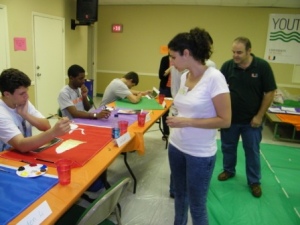Elizabeth Coule, who came to our January 31st workshop at Biscayne National Park, found a very direct way to help her animal.
Here is the email we received from Elizabeth:
“Finally received a response from Australia on how to donate money for a tree for the Baudini’s black cockatoo. I am sending you the email they sent me. My mom and I will be going to the bank this week to send this money overseas. I am excited that I got a response.”
Here is the email Elizabeth received:
“Nice to hear that people from other countries are taking an interest in our endangered cockatoos. Our organisation is the only organisation allowed to look after, rehabilitate and release black cockatoos.
We travel approximately 70,000kms every 18 months on black cockatoo related activities which are mainly black cockatoo rescues. We are all volunteers.
I have attached a photo of a Baudin and Carnaby Cockatoo so that you can look at the difference. Sadly there are only about 2000 Baudin cockatoos left in the wild. We are trying desperately to raise money to build aviaries so that we can breed these cockatoos for the future. We are on 40 acres of land that we lease from the government and would love to plant a tree in your honour to the Black cockatoos.
Kind Regards
Glenn Dewhurst
President Black Cockatoo Preservation Society
Of Australia Inc.”






































